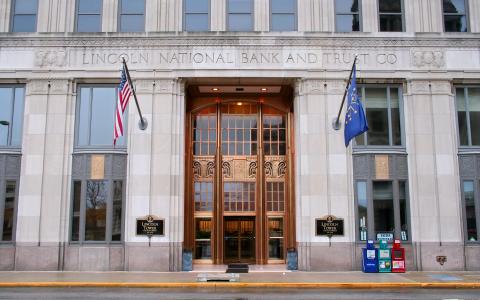
(Yahoo!Finance) - The Federal Reserve made it clear this week that it sees interest rates staying higher for longer. That is not good news for beleaguered banks already struggling with steeper funding costs.
Keeping central bank rates elevated for an extended period of years will likely increase the pressure on some institutions to become more reliant on costly brokered deposits known within the industry as "hot money."
These brokered deposits come from outside firms that funnel large amounts of customers to higher-yielding certificates of deposit offered by banks.
They are proving to be a critical bank funding source at a time when the Fed’s high rates motivate customers to seek out the highest yields for their cash. But because these deposits are typically more expensive for a bank, they cut into profits during a challenging time for many financial institutions.
Brokered deposits across the banking industry surged to $1.2 trillion in the second quarter, according to FDIC data, up 86% from the same period the year before. They accounted for 6.5% of total US bank deposits, the highest percentage in four years.
When interest rates go higher, "brokered certificates of deposits and regular certificates of deposits take up a greater percentage of a bank funding base," Gerard Cassidy, banking analyst for RBC Capital Markets, told Yahoo Finance. "That's just the way it is."
There is a debate within the banking world as to whether brokered deposits are also riskier, with some arguing that new customers are not as loyal during periods of stress and others making the case that this money can be even stickier than conventional deposits.
"There has been a significant increase in broker deposits in the banking system over the past year," FDIC Chairman Martin Gruenberg told reporters earlier this month, "and they can present liquidity risk."
Regulators can limit or prohibit a bank from taking in brokered deposits if they determine the funding isn't being adequately managed.
But FDIC vice chair Travis Hill said Thursday in a speech that these deposits can also be "extremely sticky" since the customers are fully insured, have no relationship with the bank, and thus "are indifferent to whether the bank has a future or not."
"Far from being ‘hot money,’ these deposits are so cold they are virtually frozen in place," he said.
'It was opportunistic'
During the early part of the pandemic, when interest rates were historically low, banks became awash in deposits. For the two years beginning in March 2020, total deposits in the banking system swelled by 34% to $18 trillion.
But that reversed when the Fed began moving those rates higher to cool the economy, and customers began seeking out higher yields being offered by money market funds. The first year-over-year deposit decline for all banks came at the beginning of the second quarter of 2022.
These declines accelerated during the chaos of the spring when Silicon Valley Bank, Signature Bank, and First Republic failed due to deposit runs and customers pulled money from other regional institutions.
Smaller banks have been able to get much of their money back due in part to the "hot money." As of Sept. 6, banks outside the industry’s top 25 collectively had their highest level of deposits since mid-March, according to Federal Reserve data.
One regional lender that became more reliant on hot money to get through this period was Western Alliance (WAL) in Phoenix. Its brokered deposits went to 35% of all deposits in the second quarter, up from 6.5% a year ago.
Another was Zions (ZION), based in Salt Lake City. Its brokered deposits rose by 11% during the second quarter. It had zero brokered deposits during the year-earlier period.
"It was opportunistic in the wake of what's happened" at Silicon Valley Bank, Zions Bank CEO Harris Simmons said at a banking conference earlier this month. He predicted "that will come down to a much lower number."
At regional lenders M&T Bank (MTB) and KeyCorp (KEY), concentrations each rose by more than 5 percentage points while at Dallas-based Comerica (CMA) brokered deposits rose by 7 percentage points.
Executives for each of those banks acknowledged last week the funding source helped them regain deposits. Finance chiefs for M&T and KeyCorp both said they plan to replace brokered deposits with regular deposits.
Comerica CEO James Herzog also said at a banking conference that the bank is not planning to add any more.
"We are paying for those deposits at competitive rates," Herzog said. "That's actually something we are happy to pay because we are having such success of bringing back deposits and overall feel really good about the trends."
It’s not just the mid-sized banks. Big banks are taking in more hot money too. Among the country's four largest banks, Wells Fargo's (WFC) concentration rose from near zero to 6.39%. Citigroup (C) maintains the highest concentration of brokered deposits among the big four, at 9.54%.
Higher concentrations can be problematic, Alexander Yokum, a regional bank analyst for CFRA, told Yahoo Finance. "It’s symbolic that a bank's core operations aren't enough and it’s just less profitable."
Banks with higher concentrations of brokered deposits are certainly "more sensitive to interest rate moves," Feddie Strickland, a bank analyst with Janney Montgomery Scott, told Yahoo Finance, but in moderation "they aren’t a bad thing."
By David Hollerith · Senior Reporter



